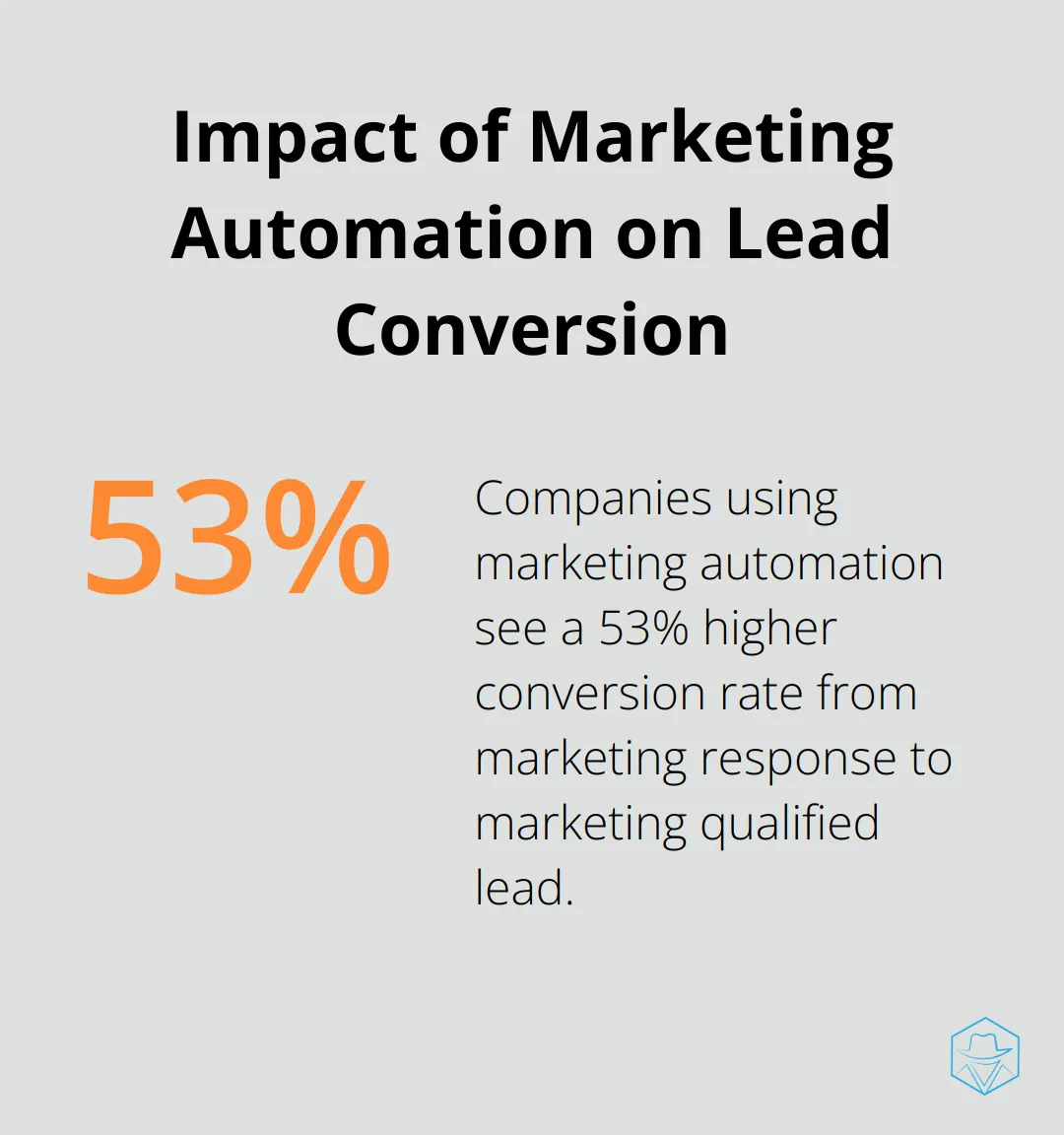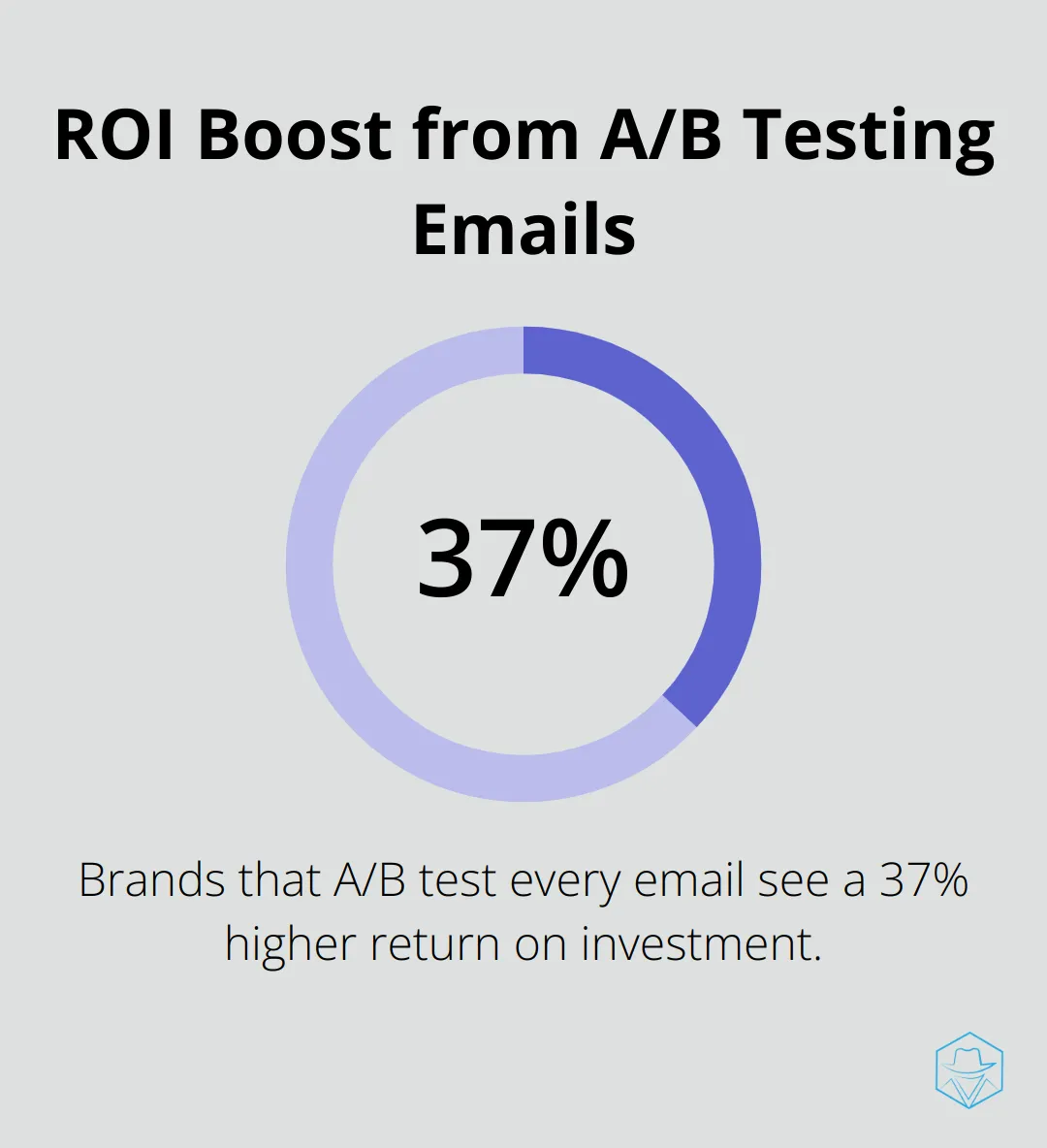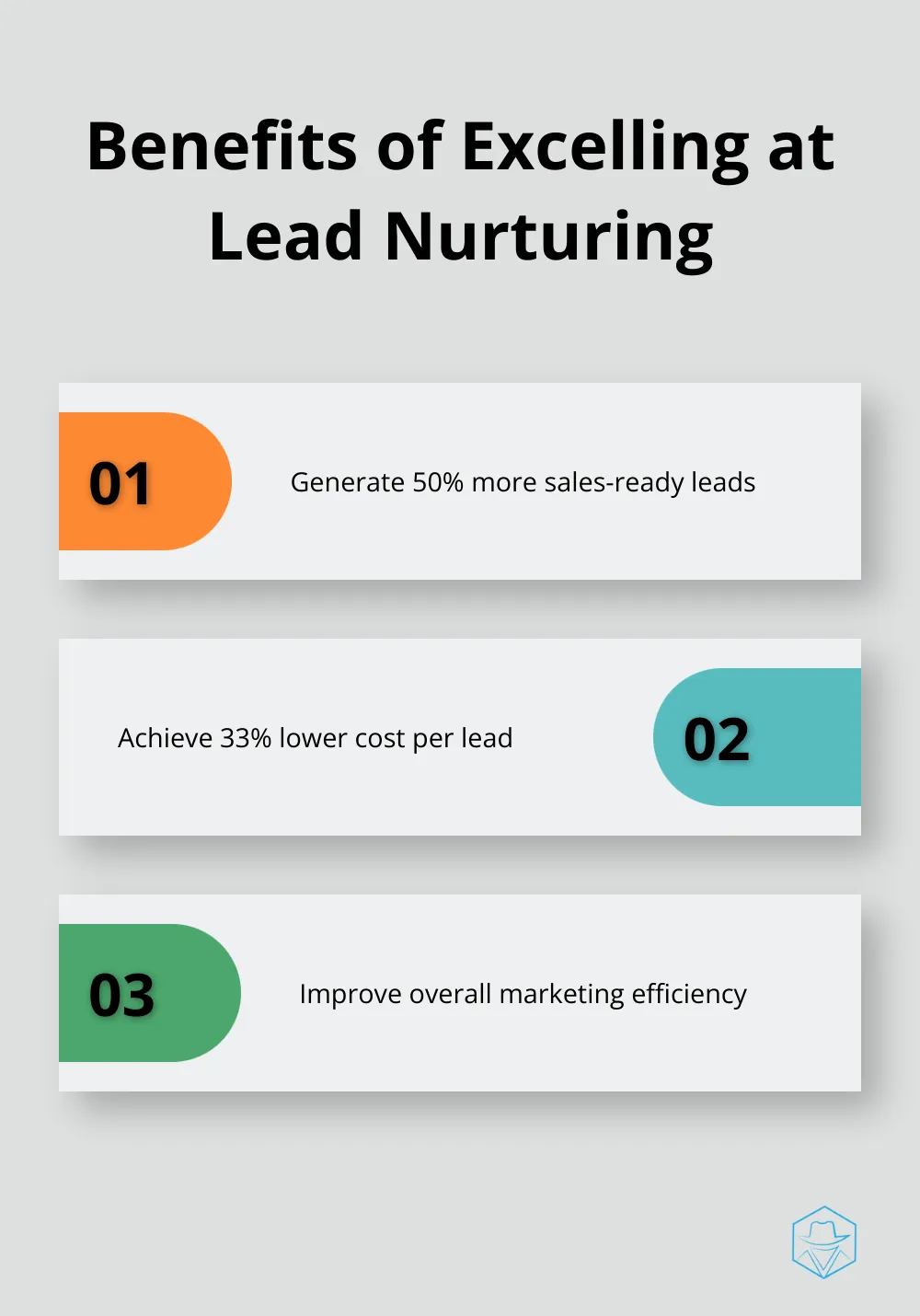Integrating Marketing Automation with Salesforce

At Drop Cowboy, we’ve seen firsthand how marketing automation with Salesforce can transform businesses. This powerful combination streamlines processes, enhances customer engagement, and boosts overall efficiency.
In this post, we’ll explore the key benefits, features, and best practices for integrating these two essential tools. Get ready to unlock the full potential of your marketing and sales efforts.
Why Integrate Marketing Automation with Salesforce?
Marketing automation integration with Salesforce transforms businesses. This powerful combination streamlines processes, enhances customer engagement, and boosts overall efficiency. Let’s explore the key benefits of this integration.
Supercharge Your Lead Management
Integration of marketing automation with Salesforce dramatically improves lead management. A study by Aberdeen Group reveals that companies using marketing automation experience a 53% higher conversion rate from marketing response to marketing qualified lead. This integration allows automatic scoring and qualification of leads based on their interactions with marketing materials.
For example, you can set up a system where a lead receives:
- 10 points for downloading a whitepaper
- 5 points for opening an email
- 20 points for attending a webinar
Once a lead reaches a certain score threshold, it’s automatically flagged for sales team follow-up.

Precision Customer Segmentation
The integration enables razor-sharp customer segmentation. You can create dynamic lists based on a wide range of criteria, from demographic data to behavioral patterns. For instance, you might create a segment of customers who’ve purchased a specific product in the last 30 days and opened your last three emails. This level of segmentation allows you to tailor your marketing messages with pinpoint accuracy, significantly boosting engagement rates.
Skyrocket Your Efficiency
One of the most immediate benefits you’ll notice is the dramatic increase in efficiency. Tasks that used to take hours can now be completed in minutes. Creating and sending a personalized email campaign to a segmented list of leads can be done with just a few clicks. This frees up your team to focus on high-value activities like strategy development and creative work. A report by Nucleus Research found that marketing automation drives a 14.5% increase in sales productivity and a 12.2% reduction in marketing overhead.
Data-Driven Decision Making
The integration provides a wealth of data and analytics tools to inform your decision-making. You can track the entire customer journey from first touch to final sale, giving you invaluable insights into what’s working and what’s not. You might discover that leads who engage with your blog content are 50% more likely to convert than those who don’t. This kind of insight allows you to continually refine and optimize your marketing strategies for maximum impact.
Now that we’ve covered the major benefits of integrating marketing automation with Salesforce, let’s explore the key features that make this integration so powerful.
Powerful Features of Salesforce Marketing Automation
Salesforce marketing automation offers a suite of powerful features that can revolutionize your marketing efforts. These tools drive engagement and boost conversions. Let’s explore the key features that make Salesforce marketing automation a game-changer.
Email Marketing Excellence
Salesforce’s email marketing capabilities exceed simple mass emails. You can create highly personalized campaigns based on customer data, behavior, and preferences. For example, you might set up a campaign that automatically sends a special offer to customers who’ve browsed a specific product category but haven’t made a purchase.
The platform also offers A/B testing functionality, allowing you to optimize your email content, subject lines, and send times. A study by Litmus found that brands that A/B test every email see a 37% higher return on investment.

Automated Lead Nurturing
Lead nurturing in Salesforce functions like a tireless sales assistant working 24/7. You can set up drip campaigns that automatically send a series of targeted messages to leads based on their actions and characteristics.
A software company might create a nurture campaign for new leads that includes:
- Day 1: Welcome email with a product overview
- Day 3: Case study showcasing customer success
- Day 7: Invitation to a product demo
- Day 14: Follow-up with frequently asked questions
This automated approach ensures consistent follow-up and keeps your brand top-of-mind. Forrester Research reports that companies that excel at lead nurturing generate 50% more sales-ready leads at 33% lower cost.
Advanced Analytics for Data-Driven Decisions
Salesforce’s analytics tools provide deep insights into your marketing performance. You can track key metrics like open rates, click-through rates, conversion rates, and ROI for each campaign.
The platform’s AI-powered Einstein Analytics uncovers hidden patterns and provides predictive insights. It might reveal that leads who engage with your blog content are 30% more likely to convert, helping you prioritize your content strategy.
Landing Page Creation and Management
Salesforce allows you to create and manage landing pages directly within the platform. This feature integrates seamlessly with your email campaigns and lead capture forms. You can design responsive landing pages (that look great on both desktop and mobile devices) and A/B test different versions to optimize conversion rates.
Social Media Integration
The social media integration feature in Salesforce enables you to manage your social media presence alongside your other marketing efforts. You can schedule posts, monitor engagement, and even use social listening tools to track mentions of your brand across various platforms. This integration provides a holistic view of your marketing efforts across channels.
These powerful features of Salesforce marketing automation work together to create a data-driven marketing machine. However, to truly harness the power of these tools, it’s essential to follow best practices for integration. Let’s explore how to successfully integrate marketing automation with Salesforce in the next section.
How to Maximize Your Salesforce Marketing Automation Integration
Set Clear, Measurable Goals
Before you start integration, establish specific, measurable objectives. Avoid vague aims like “improve lead quality.” Instead, set concrete targets such as “increase marketing qualified leads by 25% in Q3” or “reduce lead response time to under 30 minutes.” These clear goals will guide your integration strategy and provide benchmarks for success.
Prioritize Data Hygiene
Data quality can determine the success of your marketing automation efforts. Start with an audit of your existing data. Remove duplicates, standardize formats, and fill in missing information. Implement data validation rules to maintain consistency. For example, enforce a standard format for phone numbers or require certain fields to be filled before a lead can be created.
Consider using a data enrichment service to fill gaps in your customer profiles (this enhanced data will fuel more accurate segmentation and personalization in your campaigns).
Develop a Robust Lead Scoring System
Effective lead scoring aligns marketing and sales efforts. Work with your sales team to define what constitutes a qualified lead. Assign point values to different actions and attributes based on their importance to your sales process.
For instance, you might assign:
- 10 points for downloading a whitepaper
- 20 points for attending a webinar
- 15 points for visiting the pricing page
- 5 points for each year the company has been in business
Set a threshold score at which leads are passed to sales. Review and adjust your scoring criteria based on actual conversion data regularly.
Invest in Comprehensive Team Training
Even the most sophisticated system depends on the people using it. Invest in thorough training for both your marketing and sales teams. Cover not just the technical aspects of using the integrated system, but also the strategic implications.
Create detailed documentation and process guides. Appoint “power users” within each team who can provide ongoing support and champion best practices. Consider enrolling team members in marketing automation classes to enhance their skills and knowledge.
Implement Continuous Optimization
Integration requires ongoing attention. Set up regular review cycles to assess performance and identify areas for improvement. Use A/B testing to refine your email campaigns, landing pages, and lead nurturing sequences.
Monitor key metrics like lead conversion rates, email engagement, and sales cycle length. Use these insights to fine-tune your processes and campaigns continuously. To stay ahead of the curve, consider exploring how AI enhances marketing automation strategies for even more effective optimization.

Final Thoughts
Marketing automation with Salesforce transforms businesses by streamlining operations and boosting marketing effectiveness. This powerful combination improves lead management, enables precise customer segmentation, increases efficiency, and facilitates data-driven decision-making. Companies that leverage these tools create highly targeted campaigns, nurture leads effectively, and drive more conversions.
The future of marketing automation and CRM integration will involve more sophisticated AI and machine learning capabilities. These advancements will offer enhanced predictive analytics and personalization, further improving the ability to deliver the right message to the right person at the right time. The landscape continues to evolve, promising even more innovative features for marketers.
Drop Cowboy complements marketing automation strategies with features like ringless voicemail and SMS integration. Our platform includes tools such as Mimic AI™ for voice cloning and Smart Delivery™ for efficient global message delivery (enhancing your marketing efforts). To learn more about how Drop Cowboy can enhance your marketing automation with Salesforce, visit our website.
blog-dropcowboy-com
Related posts

April 21, 2025
Marketing Automation vs CRM: What’s the Difference?
Discover the key differences between marketing automation vs CRM and learn how each tool can drive your business success efficiently.

March 21, 2025
Key Benefits of Marketing Automation Revealed
Explore key benefits of marketing automation for efficiency, increased ROI, and enhanced customer engagement. Transform your strategy with proven insights.

March 22, 2025
Embedded iPaaS: Streamlining Integration Processes
Simplify integration with Embedded iPaaS. Explore how this approach can enhance efficiency, flexibility, and connectivity across systems.

April 5, 2025
Choosing the Right Marketing Automation Course
Find the best marketing automation course with practical tips for success. Boost your skills and stay ahead in the evolving digital landscape.

April 21, 2025
CRM vs Marketing Automation: Which Do You Need?
Compare CRM vs Marketing Automation to boost efficiency. Discover which tool best fits your business needs for growth and better customer management.

March 20, 2025
Zoho Marketing Automation: Features and Advantages
Explore Zoho Marketing Automation features and benefits to streamline your campaigns and boost engagement effectively.